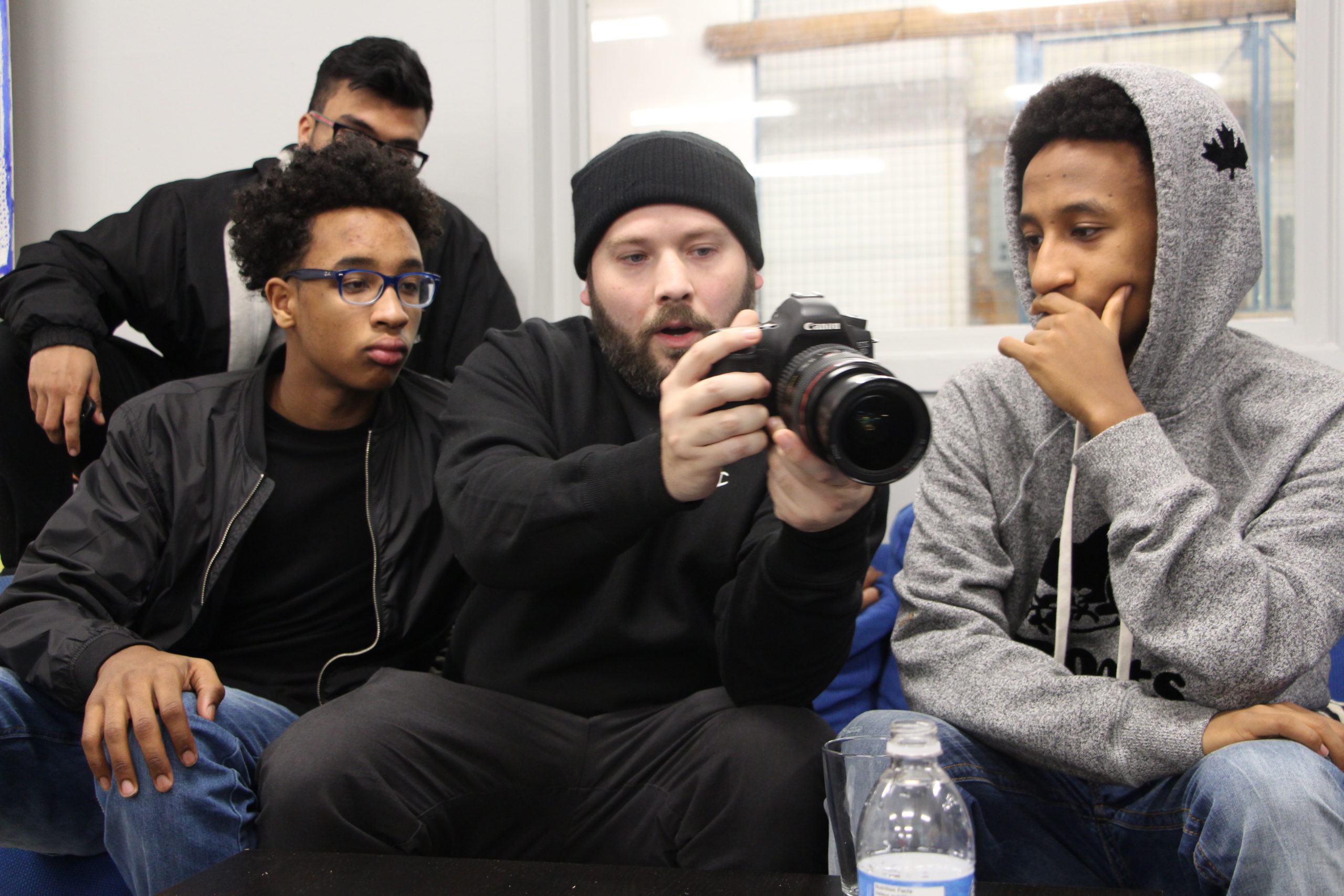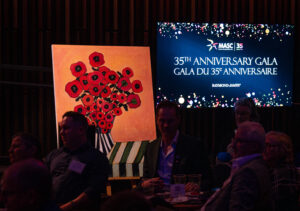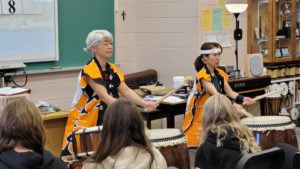MASC Interview: Craig Conoley helps students tell stories through video
By Jessica Ruano | October 6, 2022

This interview was originally published on Apt613.ca
Craig Conoley is an award-winning digital content producer and director with over ten years of experience working in advertising and documentary production. Craig has been working with MASC through the Awesome Arts en folie program since 2014, and now, as a roster artist, collaborates with participants to create mini-documentaries, cinepoems, and music videos.
You’ve been doing music videos and cinepoems as part of the MASC Awesome Arts en folie program for many years. What made you want to join the MASC roster last year in a more official capacity?
It was a conscious decision to lean into the things I love, the things I’m good at, and the things I’m most passionate about. For me, that meant sharing my love for storytelling, my creative abilities as a writer, producer, director and video editor, and my passion for teaching. Having worked in advertising for the last eight years, and now having seen the effects of the pandemic on younger generations in the schools, I believe more strongly in cultivating opportunities for students to share their stories, perspectives, and hopes.

Recording session. Photo: Craig Conoley.
Your MASC workshops focus on helping students create stories on their cell phones. Tell us about the importance of making videography accessible to young people who may not have access to all forms of technology.
The exciting thing about cell phone-based videography is that traditional barriers of entry to video production are thinning due to advances in cell phone camera hardware and software. Like the printing press before it, the cellphone + the internet is democratizing mass media, giving way to new stories, with new perspectives and new representations. In this context, I think it’s important that our youth understand how to safely harness the power of their cellphones to not only share rich and meaningful personal/community-based content, but also take back storytelling as a sort of “act of resistance” or a “taking back” of the form.

Making video content. Photo: Craig Conoley.
You’ve collaborated with a bunch of MASC artists and local folks over the years. Who are your favourite (types of) people to collaborate with and why?
Over the years I’ve had the privilege of collaborating with some truly amazing MASC artists, including spoken-word artists, musicians, muralists, dancers, and animators. Regardless of their creative medium, all MASC artists have two things in common: a high level of skill for their craft, and a deep altruistic desire to share their love of storytelling with others. It’s amazing to see the many unique and inspiring ways MASC artists reframe the world, themselves, and others while building community and inspiring creativity. My favourite people to collaborate with on workshops are those who share these things, and who also love the idea of incorporating a video element into their current curriculum.

Learning about video storytelling. Photo: Craig Conoley.
As a member of MASC, what do you gain through offering your workshops in schools and the community?
Having worked with MASC for almost ten years now, I’ve gained a tremendous sense of purpose and affirmation. Purpose comes from turning a more passive relationship with storytelling into a more active and community-based experience, one that benefits others beyond the screens I’ve spent so much time in front of. I also recognize that in my own life, storytelling, or just being creative, has always been an agent of self-healing when faced with trauma and challenge. When you see students creating personal stories that have the same function in their lives, it’s incredibly affirming. From cave paintings to simple conversation, storytelling has the twofold power of healing both teller and listener. When you witness students using storytelling with agency rather than being passive consumers of it, it creates a sense of pride in what I do.

Craig with some satisfied students. Photo: Craig Conoley.
Why do you think it’s important for our local community to have access to professional artists?
Someone once told me that only about 1,000-2,000 people in Hollywood and the media control the kind of content we consume daily, the kind of content that profoundly shapes our worldview. These gatekeepers unfortunately don’t often represent the diversity that exists in our world. If you think about the power these individuals have in shaping our perceptions of the self and the other, you can feel quite removed from the media machine and those who exert so much consequence in our lives. Now, with the rise of the influencer and the means to produce and distribute your own professional-looking video content, perhaps we feel a little closer to having agency. Perhaps there is now, more than ever before, an opportunity to insert our story into the mix. When the car was invented and released for public consumption, it had no seat belts. Like the car, the internet has no seatbelts, and the ethics that should go along with using the medium often trail behind the invention. Professional artists, especially those utilizing the internet with students, help to instil some of the missing ethics that will help young content creators navigate sharing personal and creative content online.
Latest News
View All Articles



